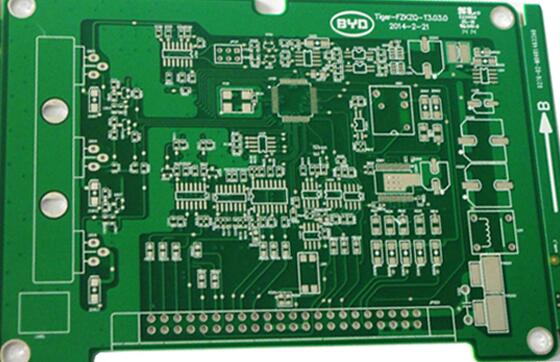What materials should be used in the PCBA manufacturing process
PCBA circuit board will appear in almost every kind of electronic equipment. It is the carrier of all electronic equipment. There are PCBA figures everywhere in the computer, from household appliances in daily life to large-scale in-vehicle electronic equipment. PCB boards are indispensable. Applications. So what materials are needed in the PCB circuit board manufacturing process? Let's take a look at it together.
1. Substrate
The original material of the printed circuit board is the copper clad substrate, referred to as the substrate. The substrate is a resin board with copper on both sides. Now the most commonly used board code is FR-4. FR-4 is mainly used for high-grade electronic products such as computers and communication equipment. Requirements for the board: one is the flame resistance, the other is the Tg point, and the third is the dielectric constant. The circuit board must be flame-resistant, cannot burn at a certain temperature, but can only be softened.
2. Copper foil
Copper foil is a conductor that forms wires on a substrate. There are two methods for manufacturing copper foil: calendering and electrolysis.

3. PP
PP is an indispensable raw material in the production of circuit boards, and its function is the adhesive between layers. Simply put, the substrate sheet in the b-stage is called PP. The specification of PP is the thickness and the amount of glue (resin).
4. Dry film
Photosensitive dry film is abbreviated as dry film. The main component is a resin material that is sensitive to a specific spectrum and undergoes a photochemical reaction. A practical dry film has three layers, and the photosensitive layer is sandwiched between two protective layers of plastic film. According to the chemical characteristics of photosensitive materials, there are two types of dry films, photopolymerization type and photodecomposition type. The photopolymerization type dry film will harden under the light of a specific spectrum, and change from water-soluble substance to water-insoluble, while the photodegradability is just the opposite.
5, solder resist paint
Solder resist is actually a kind of solder resist. It is a liquid photosensitive material that has no affinity for liquid solder. Like photosensitive dry film, it will change and harden under the light of a specific spectrum. When in use, the solder resist should be mixed with the hardener for use. Solder resist is also called ink. The color of the circuit board that we usually see is actually the color of the solder mask.
6. Negatives
The negatives we are talking about are similar to photographic negatives, which are materials that use photosensitive materials to record images. The customer sends the designed circuit diagram to the circuit board factory, and the CAM center workstation outputs the circuit diagram, but not through a common printer, but a light plotter. The role of the negative film in the circuit board factory is very important. All things on the substrate must be turned into a negative film by using the principle of image transfer. Our factory is located in China. For decades, Shenzhen has been known as the world's electronics R&D and manufacturing center. Our factory and website are approved by the Chinese government, so you can skip the middlemen and buy products on our website with confidence. Because we are a direct factory, this is the reason why 100% of our old customers continue to purchase on iPCB.